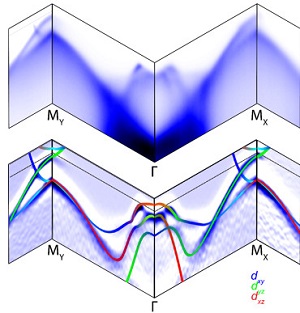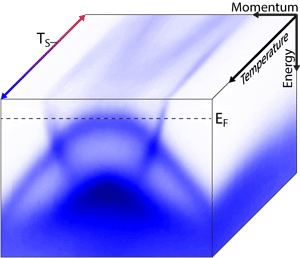The iron-based high temperature superconductors (FeSCs) were discovered a decade ago. Many interesting and exotic quantum phenomena have been uncovered in this material system. One recurring theme is the appearance of electronic nematicity in proximity to superconductivity in most of the material systems. Borrowing from the liquid crystal terminology, nematicity refers to the breaking of rotational symmetry breaking while preserving translational symmetry. The ground state of the parent compounds of well-studied FeSCs typically exhibit long range nematic order that is strongly coupled to a magnetically ordered state. With tuning via doping, chemical or hydrostatic pressure, both orders are suppressed while superconductivity emerges amidst a bath of strong nematic and magnetic fluctuations. Understanding the influence that these long-range orders have on the electronic states preceding superconductivity therefore could provide important clues towards a successful theoretical description of superconductivity in FeSCs.

Figure 1. (Top) Spectral maps representing measured band structure of completely detwinned FeSe deep in the nematic phase. (Bottom) Schematic of the bands with dominant orbital characters indicated by colors drawn on the second energy derivative of the raw spectral from top panel. The lifting of degeneracy between the dxz/dyz and dxy orbitals is seen in the distinct bands along orthogonal directions.
FeSe is an unusual FeSC that exhibits nematicity without long range magnetic order. On one hand it provides a unique opportunity to disentangle the effect of nematicity on the electronic structure from that of magnetism; while on the other it provides a test case to gauge whether the isolated long range nematic order is qualitatively similar to that of other FeSCs where the two orders are strongly coupled. Despite substantial efforts from both experimental and theoretical sides, an unambiguous and self-consistent description of the nematic reconstruction of the electronic structure has been lacking, due largely to the difficulty to align the structural twin domains that the single crystal develops when the lattice breaks rotational C4 symmetry at the onset of the nematic order.
In this study, researchers from Rice University and University of California, Berkeley, in collaboration with SIMES have carried out an angle-resolved photoemission spectroscopy (ARPES) measurement of completely detwinned FeSe. The detwinning of the single crystal was achieved via a substrate-assisted uniaxial strain device, overcoming the fragile and soft nature of the FeSe crystals. In conjunction with the small beam spot and upgraded spectrometer with deflection mode on Beam Line 5-2 at SSRL, high quality data from single domain enabled the researchers to observe three key aspects of the nematic order in FeSe, i) clear identification of the momentum-dependent nematic energy scale of 50 meV (Fig. 1); ii) the participation of not only the previously identified dxz and dyz orbitals (see July 2011 Science Highlight), but also of the dxy orbital; and iii) the disappearance of an entire electron Fermi pocket from the Fermi level via band shift preceding the onset of superconductivity (Fig. 2).

Figure 2. The upward shifting of the electron band at the MY point is observed in this animated cube in momentum, energy, and temperature. This electron band containing dominant dxz states is removed from the Fermi level in advance of the onset of superconductivity.
These three key observations together form a holistic understanding of the actions of the electronic nematic order in the FeSCs. With the onset of the nematic order, the rotational symmetry between dxz and dyz orbitals breaks in a way on par with the magnitude observed in systems where the nematic order and the magnetic order are strongly coupled, indicating that the nematic order in FeSe is representative of the prevalent nematic order found in FeSCs. The symmetry breaking occurs in a momentum-dependent way, indicating that the itinerant hopping in the dxz, dyz, and even dxy becomes different along the two crystal lattice directions that become different. This distinct hopping along orthogonal directions drastically modifies the available electronic states belonging to dxz and dyz orbitals across the Brillouin zone well in advance of the onset of superconductivity. As a result, the available electronic states with the dxz and dyz orbitals that can participate in the Cooper pairing become different, leading to the proposed phenomenon of orbital-selective Cooper pairing. In precise terms, the results presented in this study clarify some of the previous controversies regarding the interpretation of the effect and importance of nematicity in FeSCs. Perhaps more importantly, this study underlines the critical role played by the orbital degree of freedom in scripting the exotic electronic phases in the FeSCs.
M. Yi, H. Pfau, Y. Zhang, Y. He, H. Wu, T. Chen, Z. R. Ye, M. Hashimoto, R. Yu, Q. Si, D.-H. Lee, P. Dai, Z.-X. Shen, D. H. Lu and R. J. Birgeneau, "Nematic Energy Scale and the Missing Electron Pocket in FeSe", Phys. Rev. X 9, 041049 (2019) doi: 10.1103/PhysRevX.9.041049




